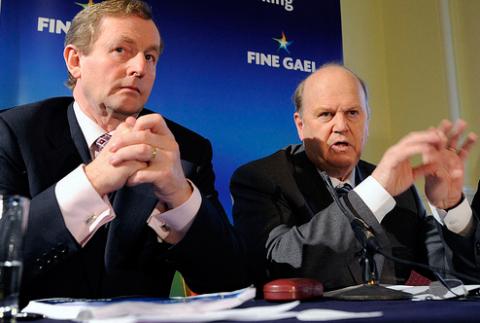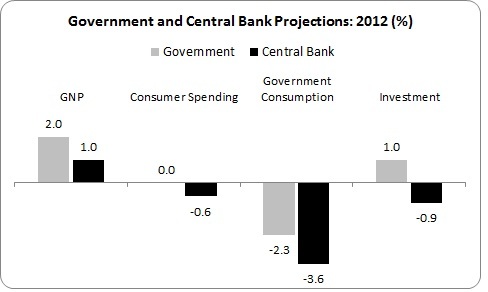Time to start working on Plan B

A new Central Bank report suggests that the Government needs to abandon its current policies in favour of more effective ones if it wants to return to economic growth, writes Michael Taft.
The recent Central Bank quarterly report confirms (as if we needed confirmation) that the economy remains in slow bleed mode. That they have revised downwards key domestic indicators is in keeping with other forecasters. We have an economy that is spinning its wheels in a deflationary trough, with no sign of relief in the short-term.
If the Central Bank projections hold, the Government is on course to miss almost all its economic targets – only a few weeks after publishing its projections.
Looking at the domestic economy we find that GNP will grow – but according to the Central Bank by only half the rate the Government is hoping for. Consumer spending, Government consumption (spending on public services) and investment – the Central Bank is more pessimistic.
On employment, the Central Bank is projecting growth for the first time since 2008 – but only a marginal 4,000 jobs increase. The Government is hoping it will be more than twice that at 9,000 jobs. As a consequence the Central Bank is projecting a marginally higher unemployment rate: 13.9%.

The only thing that is keeping the economy afloat, statistically anyway, is exports – which both project to grow by over 6%. But as discussed elsewhere, this will have a limited knock-on effect on the domestic economy as long as foreign multi-nationals drive the exports.
Recent data emerging doesn’t paint an encouraging picture. The NCB Purchasing Managers’ Index for the manufacturing sector showed a fall for the second month running. This is part of a general fall in manufacturing activity, both in Europe and globally. This is not unexpected. The increase in manufacturing experienced here and abroad in the first half of this year was always likely to ease off.
Insolvencies in Ireland are still growing apace. Insolvencyjournal.ie recorded a 6% increase in business closures in the seven months to July over last year. Again, this is not surprising with the Retail Sales Index falling almost every month this year.
And all this is likely to continue with the Central Bank projecting that the economy will be remain in a domestic-demand recession next year – with consumer spending, Government consumption, and investment remaining south of zero.
Let’s be clear – this grinding down of the economy is not due to external demand. If the world didn’t want to buy our goods and services it would be difficult to turn around in the short-term. However, external demand is healthy, exports are rising. It is not external demand that is dragging the economy down.
It is domestic demand. And this is where austerity policies are doing their greatest damage – falling wages, failing businesses, rising unemployment and the resulting sluggishness in public finances; all this is being exacerbated by a systemic bank failure to support the local economy.
There is some good news in all this. The attacks on domestic demand via austerity policies are government-manufactured. They can be undone. A new course can be charted. Yes, there is limited room for manoeuvre given the EU-IMF deal – but manoeuvre room still exists.
What is required, however, is a government that has an extremely high level of fiscal competence.
What is required is for the current government to admit that the policies of Fianna Fail should no longer be continued.
What is required is for Ministers to work on a Plan B over the rest of the summer.
First published on notesonthefront.typepad.com
{jathumbnailoff}
